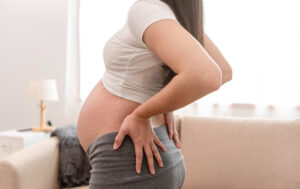Pregnancy massage involves the use of lotion or oil to facilitate work on areas that are safely uncovered, such as the neck, shoulders, back, arms, hands, legs and feet. The therapist avoids areas where the baby’s weight and uterus could compress blood vessels or cut off circulation to the placenta, such as the abdomen and the lower legs.
Benefits
Pregnancy is one of the most amazing and beautiful experiences a woman can have, but it can also be physically exhausting. Massage is an effective way to alleviate some of the aches and pains associated with pregnancy.
Studies show that women who receive regular prenatal massage have lower stress hormone levels, shorter labors and less demand for pain medications. This is due to increased blood circulation and decreased muscle tension.
Massage also stimulates the lymphatic system, which helps to eliminate waste and toxins. This is especially beneficial for expectant mothers who may be experiencing leg swelling (edema). Massage can help to ease the aches and pains associated with swollen ankles, feet and legs. It can also help with sciatica and piriformis syndrome, which are common during pregnancy.
The most important thing to remember is to get a prenatal massage from an experienced, knowledgeable therapist. A therapist who has undergone extensive training in this specialty will know how to support your growing bump, where the pressure points are and which oils are safe. A therapist trained in prenatal massage will also avoid the supine position, which can cause a dangerous drop in blood pressure due to compression of the vena cava.
Your therapist will use pillows, tables and bolsters to support your body during the session. You will remain fully-clothed, with the exception of the area being worked on.
Safety
Pregnancy massage can relieve many of the common discomforts that come with carrying a growing baby. A trained therapist knows the safe techniques to use and can work with you throughout your pregnancy to help ease discomfort and address issues that arise as you progress.
Research suggests that massage can help regulate a mother’s hormone levels, which may lead to improved mood and less anxiety. Elevated stress hormones, such as cortisol, have also been linked to complications with the placenta and an increased risk of low birth weight for baby. Prenatal massage can bring these hormones back into balance and help maintain a healthy in-utero environment for both mother and baby.
Some massage practitioners avoid massaging expectant mothers in the first trimester because of the increased risk for miscarriage, but this is not based on medical evidence. Generally, massage is considered safe after the first trimester and can even alleviate nausea in early pregnancy.
Your therapist will likely use unscented oil and avoid essential oils with known potential to trigger uterine contractions, such as lavender, in those who have a history of miscarriage or are in the high-risk category for the condition. They will also be aware of pressure points in the legs, such as the ankles, that can trigger premature labor and are not to be massaged.
Techniques
Prenatal Massage is a safe, effective way to alleviate many of the discomforts associated with pregnancy. Generally speaking, in the second trimester, it’s safer to have massage than during the first twelve weeks of gestation (when miscarriage risks are highest).
During a prenatal session, the client is usually semi-reclined using pillows to support the body. This is so that pressure on the vena cava is not excessive, and it also helps to relieve neck and shoulder pain, sciatica, and leg swelling (edema). It’s a good idea to avoid deep tissue work or massage of the abdomen. Having regular prenatal massage may help in the delivery process, with shorter labors and less demand for pain medications.
In addition, a well-trained massage therapist will know not to apply acupressure points that promote contractions or jump start labor. A seasoned therapist will not be afraid to ask for clarification from the client’s doctor before proceeding.
The best time to receive a prenatal massage is during the second trimester, from about 27 weeks onward. During this time, morning sickness and the dramatic physical changes that occur in the first trimester begin to subside. It is at this point that the lower back pain and hip pain, as well as a sore neck and feet, typically begin to develop. Increasing blood flow to these areas through massage has proven benefits for both mother and child.
Preparation
The most important step is to get a reputable massage therapist who is certified in prenatal care. A good place to start is by asking friends and family for recommendations, or searching online. Then, make sure the therapist has experience massaging pregnant clients and understands the unique requirements of this type of massage.
The best time to receive a massage while pregnant is after the first trimester, although massage can be beneficial at any point in pregnancy. Early on, it can ease nausea and discomfort associated with the first trimester. Later, it can relieve back and neck pain caused by the weight of the baby, as well as sciatic nerve pain. It can also help reduce swelling in the feet and legs.
Some cautions to be aware of include the possibility that vigorous massage of the legs could dislodge a blood clot, leading to an embolism, and the potential for complications related to the placenta, such as preeclampsia or accrete. Massage may also aggravate a condition known as placenta previa, where the placenta covers a major blood vessel and can lead to bleeding.
A final point to keep in mind is that a massage can trigger contractions and should not be used as an alternative to an epidural during labor. In addition, a massage should never be combined with treatments that use heat, such as hot water, steam baths or Jacuzzis.





